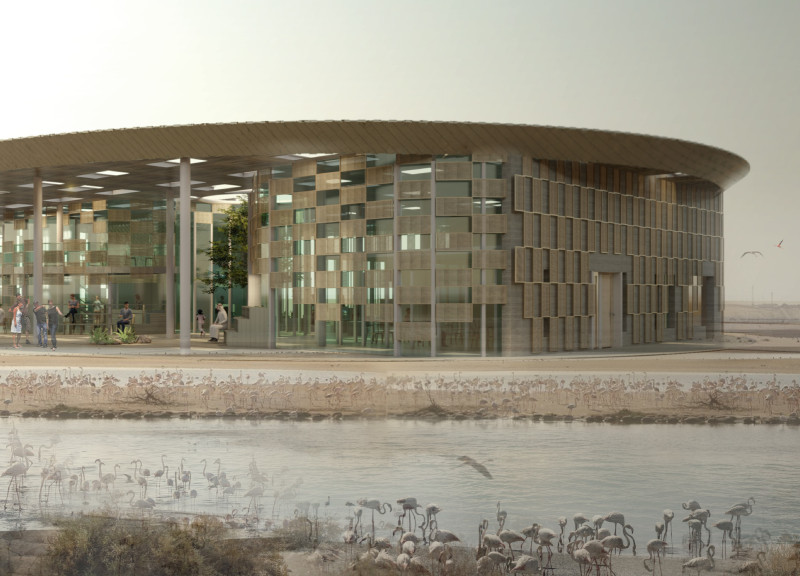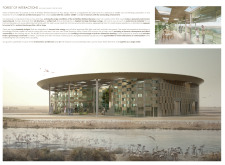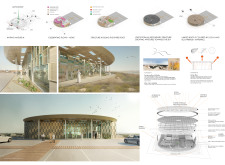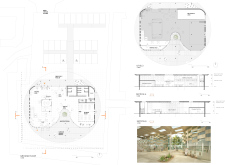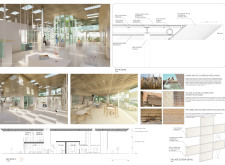5 key facts about this project
The Forest of Interactions is located in The Al Wathba Wetland Reserve in Abu Dhabi, designed to foster a connection between the built environment and the surrounding natural landscape. The center serves to engage visitors in the region's unique ecosystem, particularly the diverse flamingo population. The design emphasizes organic shapes, using curves and lines that mirror the natural contours of the wetland, allowing the structure to blend with its environment.
Design Concept
The roof draws inspiration from the wings of flamingos, symbolizing openness and creating a welcoming atmosphere. This design element not only provides shelter but also maximizes natural light and air circulation inside the building. Large skylights are integrated into the roof to capture sunlight and sustain energy efficiency. Carefully positioned openings allow fresh air to flow freely through the interior, enhancing comfort for visitors.
Spatial Organization
Inside, the Forest of Interactions is arranged to promote interaction among various groups, including visitors, volunteers, and staff. The layout encourages movement and engagement, supporting both educational and recreational activities. A significant tree within the center acts as a focal point, symbolizing a commitment to environmental awareness and serving as a gathering space for those who visit.
Materiality
Materials for the project were chosen to reflect the local context and emphasize sustainability. Prefabricated rammed earth is used for the walls, blending naturally with the surrounding landscape while also providing effective thermal properties. The roof is made of woven reeds, contributing to a visual connection with nearby vegetation. Additionally, woven palm screens create shaded areas, enhancing user experience and conserving energy.
This blend of thoughtful design elements leads to a functional space that respects and honors the natural surroundings, providing an inviting environment for learning and exploration.


